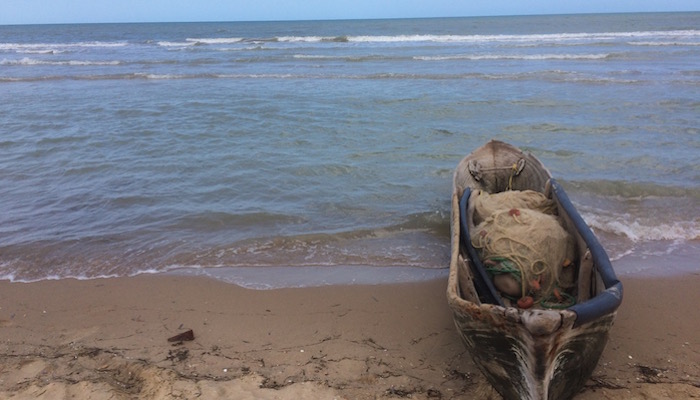La Guajira Peninsula is located in the northeastern part Colombia. In recent years, Colombia experienced an influx of travelers, but La Guajira manages to stay under radar for the majority of tourists and, for the most part, remains true to its traditional ways of life.

Thus, traveling there poses some challenges. Some issues seem so obvious to Colombians that they do not even mention them; others are so specific to that particular geographical location that only locals might know about them. As a result, there are some gaps in online sources of information about the region.
After visiting La Guajira, we compiled a list of tips to make traveling there more enjoyable:
- Time is of no importance there. There is a very relaxed attitude about punctuality among locals. Eventually, whatever you asked for would be done, but do not expect it to happen on-time.
- Distance markers (in kilometers) exist, but they are very low and hard to spot on a first sight or in a dim light. Also, the markers with odd kilometers are positioned on one side of the road, with even – on the other side.
- Be aware of police and military checkpoints. As a rule, majority of police officers do not speak English, but military – do. Keep your passport handy, smile and be polite. Friendly attitude goes a long way.
- Beware of maps. Seriously, Google Maps “misplaced” town of Palomino by a good 20 kilometers. OpenStreet Map “knows” the area better. Local printed maps are not very precise either.
- Buy plenty of water in Santa Marta or Riohacha. Buying water along the road is very expensive.
- Driving? Get a full tank of gas in Santa Marta or Riohacha. Outside of these cities, majority of gas stations are not functional so your refueling needs would be attended by enterprising inhabitants of La Guajira selling Venezuelan gas by a bottle.
- Get the cash before leaving Santa Marta or Riohacha. ATMs are not easily available (or in working condition) in La Guajira.
- Food, water, gas, souvenirs that offered by local street vendors along the Troncal Del Caribe (Rt. 90) are prohibitively overpriced for foreigners. If you desperately need to buy something while on the road, try to do it in stores in small towns. You may (or may not) be able to get a better price.
- Internet – do not even think about it. In our experience, WiFi, even where it was advertised as available, was extremely spotty and unreliable. Your best bet to get it is in the middle of a night.
- Cell phone connection – very spotty and unreliable. I guess, it also depends on a provider. Movistar was not working well for us.
- Beaches are beautiful, but some of them are known for strong currents and surf. Do not risk your life and learn about beach conditions before jumping into the water.
- If you plan to visit a true off-the-beaten-path place on your own terms you would need a car.
- If you plan to rent a car get the most generic, non-flashy and somewhat beaten up one.Youshould be concerned about how well it runs, but not how good it looks. There are 2 reasons for that:
- La Guajira is a wild and mostly deserted place, been stranded somewhere out there is not desirable.
- Nobody pays attention to a not-so-new car, so you can leave it anywhere without concern about somebody stealing it or breaking into it.
- Be very careful while driving after sunset. Locals are fearlessly walking, riding bicycles and motorbikes along the roads with a total lack of anything reflective on their clothing or bikes. You just simply can not see them in the dark until you almost hit them.
- Driving a car? Do not try to race buses. Find a stretch of the road with good visibility and let them pass.
- Speed limit is just a suggestion. Between towns, everybody drives between 80 to 100 km/h regardless of the condition of the road.
- Beware of speed bumps. Most certainly, every town or village along the road would have at least one. Some of the speed bumps are quite… err… “bumpy”. You would not want to run over them faster than 10km/h.
- Mosquito repellent is hard to come by in Santa Marta or La Guajira. At least, as of January 2015, it was sold out in Santa Marta. During our trip, mosquitos did not bother us too much, but we were warned about Chikungunya virus. Better be safe than sorry, so we brought the repellent with us and used it after sunset.
Last, but no least. We really liked La Guajira. It is wild, magical, beautiful. We hope you would enjoy it too.
La Guajira Peninsula on Google Maps:
I am a Canadian Living in riohacha. I’ve been living here 7 months. I have been living in Colombia for 6 years. And decided riohacha was a place I wanted to live. But not anymore. Generally the people in Colombia are excellent and very friendly. The people here are very unsocial. There is no good restaurants to eat in. There is only the beaches. When they are clean. I would recommend you investigate the place before you visit it. thank God I’m leaving here at the end of the month.